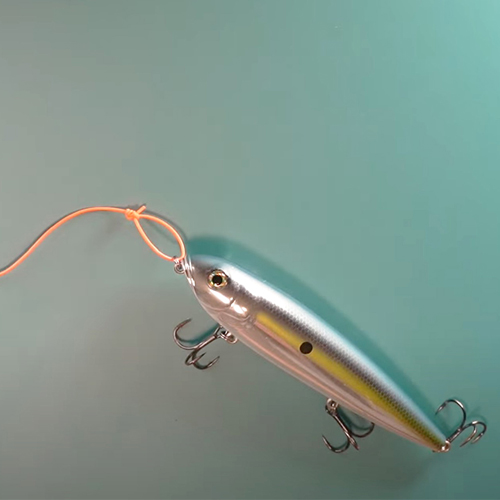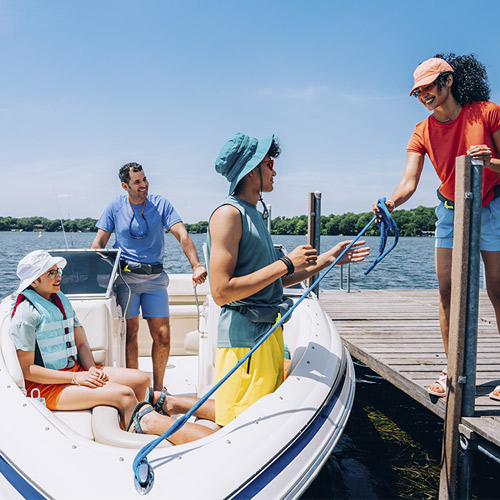Boat Trailering Basics
Boat trailering is great way to explore different waterways and fishing spots in your state or region. With a trailerable boat, you're free to boat and fish just about anywhere - lakes, rivers, bays or inlets. And using a boat trailer is also the most affordable way to store a boat.
Tips for Trailering Your Boat
Before hitting the road with your vessel in tow, it's crucial to assess your vehicle's towing capacity. Check your owner's manual for this information, as it varies depending on the make and model. While smaller vehicles like sedans may not be suitable for towing larger boats, standard pickup trucks and SUVs can typically handle trailers up to 25 feet.
- Towing Capacity: Your first consideration is the towing capacity of your car, truck or SUV. You can find this information in your vehicle's owner's manual. Generally, small family sedans are not suitable for towing, although a small, aluminum fishing boat may not present a problem, provided you have appropriate towing equipment installed on the car. Most standard pickup trucks and SUVs can trailer boats up to 25 feet, but again, consult your vehicle owner's manual for limitations.
- Weighing In: Your owner's manual will list the "dry weight" of your boat. That's the weight of the boat, less fuel and gear. Make sure when you're assessing your vehicle's towing capacity that you add several hundred pounds to the dry weight of the boat to account for those extras.
- Muscle Power: As the weight, length and width (beam) of a given boat increase, so does the muscle power needed to launch and retrieve it. A small boat may be easy for one person to handle at the ramp, but larger boats, generally those more than 25 feet, may require additional hands. Don't be afraid to ask for help at the ramp if you need it.
Boat Launching Basics
Here are some tips to prepare your boat and trailer before it's your turn to launch:
- Make sure the lower unit is raised to avoid scraping.
- Install the drain plug.
- Release the securing straps.
- Disconnect the trailer's lights.
- Rig a line so the boat doesn't drift away after it is launched.
If you are stepping a mast, make sure there are no overhead power lines between you and the ramp. If you don't have bearing protectors, make sure hubs are cool. Next, you'll have to back the trailer onto the launch ramp.
Ramp Backing Steps
Ramp backing is easy and anyone can do it. Practice backing the trailer in the quiet safety of your driveway or, better yet, an empty parking lot. Ramp Backing basic steps:
- Approach with the rig close to the inside corner of the ramp.
- Turn the wheel right so the trailer swings out and around the corner.
- Turn the wheel left and back slowly as the trailer moves to the right.
- Straighten the wheel and back down the ramp.
Retrieving the Boat
When you get to the ramp, good manners are very important. If there are other boaters launching or leaving, you must wait your turn. When your turn comes, be ready to move quickly.
- Start by getting all of your gear ready to take off the boat, and get your boat ready to go on the trailer. If you have the option, let someone off the boat to get the trailer to the water while you or the other people aboard take the gear off.
- Before you back the trailer down the ramp, make sure the trailer lights aren't connected to the tow vehicle. If the trailer has a tilting trailer bed, put it in the up position. Slowly back the trailer into the water, and use the boat's bow and stern lines to line the boat up with the trailer.
- Attach the winch cable to the boat and start cranking. Be sure no one is in the direct line of the winch cable - if it breaks you can be seriously injured from the whiplash. After you have the boat all the way on the trailer, attach the safety chains and pull the boat trailer forward, making sure your boat's outboard motor or stem drive unit is raised first.
- Once you've cleared the ramp area, make sure all loose gear is stowed, attach the tie-down straps, and reconnect the trailer lights to the tow vehicle and hit the road.
- While many people drive the boat onto the trailer, it isn't advised. Using the engine to assist trailering erodes the ramp bed, can lead to debris being sucked into the engine and can cause an accident.
- Make sure you drain all water from the boat: the bilge, the livewell, the trailer lights, etc. Trailer boats are a leading cause of the spread of invasive species. Make sure your boat is cleaned thoroughly before you launch your boat again, particularly if you go to a different body of water. The best thing to do is to clean your boat at the ramp. If you can't, try to make sure that when you do wash it, the water doesn't go into a drain that feeds into a sewer that empties into a different body of water.
Content courtesy of DiscoverBoating.com
Visit our next section to learn how to stay safe in the water while boating.
KEEP LEARNING

How to Tie the Non-Slip Loop Knot
The non-slip loop knot is a popular and reliable choice for securing hooks, lures, and other tackle to your fishing line.
LEARN MORE

Socials
Take me fishing social media links
LEARN MORE

TakeMeFishing x Teen Vogue
Join us on a creative journey as fashion designer Ahmrii Johnson walks us through her collaborative vision and process with Teen Vogue and fashion brand, Rentrayage, to create a special piece.
LEARN MORE


.png?lang=en-US&ext=.png)